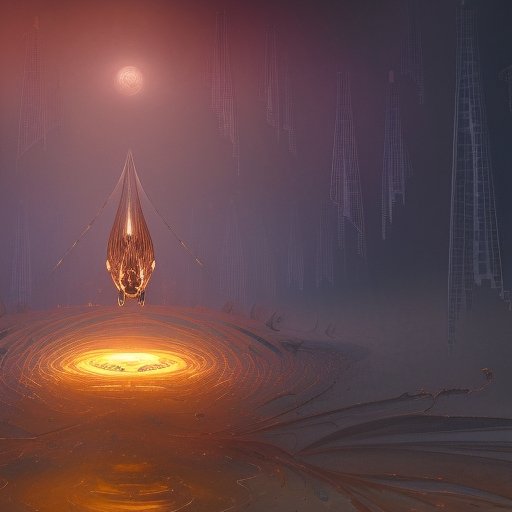
As science fiction writers, we’ve long been fascinated with the idea of scale. From the microscopic to the cosmic, the possibilities are endless, and the implications often mind-bending. But how do we deal with the challenges of scale, both in our imaginations and in real-world science? In this article, we explore the rise of scales in science fiction and beyond, from the challenges of shrinking and growing worlds to the fascinating world of nano and giga technologies. Join us on a journey through scale, and see just how big – or small – our world can truly be.
I. intro
Get ready to be shrunk down and blasted into a whole new world, because shrink rays are finally catching on! That’s right, the science fiction dream of tiny tech is quickly becoming a reality. And I’m not talking about Ant-Man and the Wasp either – this is real-world science that could change the game in ways we can’t even begin to imagine.

We all know a little bit about shrinking things down to microscopic size, thanks to classics like “Honey, I Shrunk the Kids” and “The Incredible Shrinking Man.” But what if it was more than just a movie plot? What if we could make ourselves or our technology so small that we could explore places that were once completely unreachable?
Well, that’s exactly what scientists are starting to do. With the advent of new technologies like nano-sized robots, quantum computing, and micro-sensors, we’re finally able to shrink down and explore the world in ways that even science fiction writers hadn’t dreamed of.
So why the sudden rise in interest in this technology? For starters, microscopic tech has the potential to revolutionize the way we think about medicine, environmental preservation, and even space exploration. Imagine tiny robots that could swim through your bloodstream and detect cancer cells, or miniaturized satellites that could monitor comets far beyond our reach.
This is the kind of world that’s finally within our grasp, and it’s all thanks to the incredible advances we’ve made in scaling things down. From nano to pico, we’re exploring a new frontier of science and technology that’s opening up endless possibilities for the future.
II. Giant problems
It’s not all sunshine and rainbows in the world of shrink rays, though. As with any new technology, there are plenty of giant problems to face along the way. For one thing, getting people to trust that making something small won’t also make it ineffective can be a monumental challenge.

Think of all the times where you might have thought “if only it were bigger, it would be more powerful.” It’s a common misconception, and one that’s hard to shake. But the truth is, in today’s world of science and technology, smaller can often mean better.
Of course, there are also more practical challenges to be faced when it comes to shrinking things down to size. How do you keep everything functioning on such a microscopic level? And what about the materials involved – can we really make circuits and connectors small enough to work at that scale?
These are the kinds of questions that researchers and scientists are currently grappling with. It’s not an easy task, but it’s one that we’re determined to solve. After all, the potential upside of shrinking things down to a microscopic level is too great to ignore.
But it’s not just about the science, either. There are plenty of ethical considerations to be taken into account when we start playing around with shrink rays. For example, what if we could shrink humans down to size? Would it be humane to do so, and what would it mean for our interactions with the world around us?
These are big questions, and ones that we don’t necessarily have answers to yet. But as we continue to explore the possibilities of scale in science and technology, we’ll undoubtedly come up against these challenges time and time again. How we choose to tackle them will ultimately determine the future of this groundbreaking new field.
III. The little guys
You don’t need to be a science fiction writer to understand that the future is small. And by small, we mean microscopic! The world of nano and pico tech is rapidly expanding, and there’s no limit to what we can achieve with tiny technologies. And when we say tiny, we’re talking about a scale so small it’s almost unfathomable – we’re talking about things that are smaller than a human hair!

But just because they’re small doesn’t mean microscopic technologies aren’t capable of making a big impact. In fact, it’s quite the opposite. One major area where we’re seeing these tiny inventions make a huge difference is in medicine. With nano-sized machines, we could potentially diagnose and treat diseases in ways that were once impossible. Imagine a world where cancer can be detected and removed before it even has a chance to spread!
But it’s not just medicine where tiny machines are revolutionizing the way we do things. In industry, micro-technologies are being used to create stronger, more durable materials, and robots that can perform tasks with unprecedented precision. Imagine a factory where tiny robots work round the clock, effortlessly assembling everything from cars to satellites.
Even our environment could benefit from the rise of the little guys. With micro-sensors, we can monitor things like air and water quality on a scale we’ve never been able to before. This could help us detect environmental dangers before they become critical, and clean up hazardous materials in a way that’s both safe and efficient.
It’s hard to understate just how big an impact tiny technologies could make on our world. From medicine to industry to the environment, we’re finally able to explore a new dimension of scientific discovery. So if you want to be on the cutting edge of what’s possible, all you need to do is look beyond the microscope!
IV. The big picture
But it’s not all about getting small- sometimes, when it comes to science, bigger is better. Macroscopic science has been around forever, exploring the vast and infinite universe beyond our microscopic world. From telescopes to supercomputers, we’re constantly pushing the boundaries of what we can see and understand about the universe.

But what’s the ultimate goal of this big-picture science? Well, it’s all about the quest for understanding: understanding our place in the universe, understanding the laws of nature, and understanding what it means to be alive.
For centuries, scientists have been studying the behavior of the stars and planets, using everything at their disposal to map the universe and unlock its secrets. And as our technology advances, we’re able to see further and further into the abyss, exploring the far reaches of galaxies that were once hidden from our sight.
But it’s not just the vast and expansive universe that scientists are interested in – there’s also plenty to explore at the microscale as well. From the complexity of DNA to the unseen world of bacteria and viruses, we’re constantly delving deeper and deeper into the mysteries of life itself.
So whether we’re scaling things up or down, the quest for understanding is what drives us forward. We’re driven by a curiosity that knows no bounds, always searching for the next breakthrough that will bring us closer to our ultimate goal. And who knows what we’ll discover along the way? The universe is full of surprises, and it’s only through our relentless exploration that we’ll be able to uncover them all.
V. Scaling up
From the smallest of the small to the biggest of the big, scaling up is where the real power truly lies. The world of science fiction has long explored the possibilities of stratospheric technologies, like faster-than-light (FTL) travel and planet-sized megastructures.

But what about the other end of the spectrum? What about the amazing things we can accomplish by scaling things down – from nano to pico, femto to atto, all the way to the barely imaginable yocto?
At the smallest scale, we’re exploring the mysteries of the atomic world, where quantum mechanics reigns supreme. This is a realm where individual electrons dance around their nuclei in a chaotic, unpredictable dance that can only be described by probability functions.
But while atomic physics may seem like the smallest of the small, there’s even smaller still. In the world of nanotechnology, scientists are manipulating matter at the level of individual molecules and atoms, using tiny robots and nanosensors to explore everything from environmental contaminants to cancer cells.
Scaling things down even further, we enter the world of quantum computing – a mind-bending realm where the normal rules of physics don’t seem to apply. It’s here that we may be able to solve problems that are currently beyond our computational reach, like predicting weather patterns with incredible accuracy, or simulating the behavior of complex molecular systems.
But while scaling things down has its benefits, sometimes it’s all about going big. From the giant space habitats of “Red Mars” to the planet-crushing weapons of “Ender’s Game,” science fiction has explored the possibilities of megastructures for decades.
In the real world, we’re already seeing the potential of megastructures like space elevators, orbital rings, and Dyson spheres. These massive structures could revolutionize human space exploration and even help us harness the power of our stars themselves.
Whether it’s scaling up or scaling down, the world of science fiction has always been about exploring the limits of what’s possible. And with the incredible technologies we’re developing today, those limits are being pushed further and further every day.
VI. The future of scale
But where do we go from here? Sure, we’ve finally figured out how to shrink things down to microscopic size, but what’s next? The answer lies in the realm of infinite growth – a place where science fiction and reality converge to create a world beyond our wildest dreams.

Picture this: an infinitely expanding universe, with technology that can scale up to match its size. Imagine a civilization that can harness the power of stars, quasars, and even black holes to push the boundaries of what’s possible. This is the future of scale – a world where growth has no limits.
But how do we get there? First, we need to continue exploring the power of our shrinking technology. By scaling things down to the smallest possible size, we’ll be able to unlock new levels of computational power, energy efficiency, and raw processing power. With these new tools in hand, we’ll be able to tackle the biggest problems facing our world today – from climate change to disease eradication.
But shrinking things down is just the first step. The future of scale is all about pushing the boundaries of what’s possible, and finding new ways to expand our understanding of the universe. From building massive space telescopes to sending nano-probes to the edges of the galaxy, we need to keep pushing further and further to see what’s out there.
Of course, there are always risks involved in pushing the limits of technology. There’s always the danger of creating something beyond our control – something that could threaten the very fabric of our existence. But in the end, the rewards of exploring new levels of scale far outweigh the risks.
So let’s embrace the future of scale, and push the limits of what’s possible. Who knows what kind of wonders we’ll discover along the way – and what kind of problems we’ll be able to solve once and for all. The sky is no longer the limit – it’s just the beginning.
VII. Outro
So, it seems as though we’re living in a world where size doesn’t really matter, doesn’t it? And yet, at the same time, the possibilities of scaling up and scaling down seem infinite.

As science fiction writers, we’ve been dreaming for years about the possibilities of tiny technology and massive growth. And now, it finally feels as though the future we’ve always envisioned is within our grasp.
Whether it’s exploring the microscopic world with new technologies, scaling up to explore the depths of space, or even just using scaling technology to make our daily lives a little bit more convenient, there’s no doubt that scaling is the way of the future.
And as we continue to explore and expand our horizons, it’s safe to say that the opportunities for growth and development are limitless. Who knows what the future will hold – perhaps we’ll even discover technological applications that we haven’t even dreamed of yet.
But regardless of what comes next, one thing is clear – no matter how big or small the concept, we have the power to make it a reality. Whether it’s through advancements in science, technology, or even just our imaginations, we’re capable of achieving anything.
So let’s keep dreaming big, and let’s keep pushing the boundaries of what we thought was possible. After all, it’s a small world after all – or is it?






